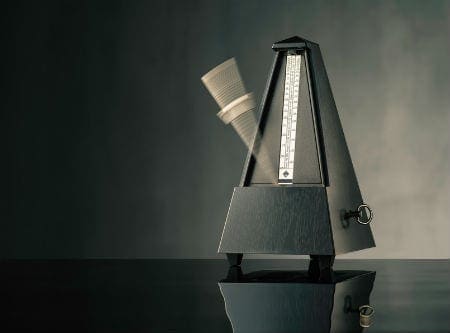How to Set Your KPI’s Calculation Cadence
by Stacey Barr |Consider the measures your organisation currently uses. How many are calculated annually? Or quarterly? Or monthly? Or weekly? What’s the rationale for having chosen that cadence of calculation? One of the bad habits of performance measurement is measuring too infrequently, and this means we miss important signals in our measures.

If you’re trying to lose weight, measuring yourself every year is telling you nothing. Your weight can change over the course of a few days, particularly if you are changing your diet and activity to make it so. Measuring that KPI with an annual cadence, or even quarterly or monthly, is too infrequent to give you feedback you can use to tweak your weight loss strategy. It’s too little, too late.
But measuring your weight every hour is also telling you nothing. Your weight may well vary over the course of a few hours, but those variations will be due to error in the scales, and when and how much you’ve consumed over the day. You end up with lots of data points that are merely noise that drowns out the signals of true weight change.
Measuring your weight somewhere between daily and weekly is just about right, to avoid the problems of feedback that is too late and feedback that is too noisy. It’s the right rhythm for something like body weight, that has it’s own natural speed of change.
Cadence should match the rhythm of change.
Every performance result – or goal – that we measure in business has it’s own natural rhythm of change, too. A safety-first culture, customer life-time value, and recovery of the environment from pollution can take months or years to change. On-time delivery, procurement spend, and customer complaint resolution time can take only a few weeks to change. So the frequency of the measures that monitor these results should match their rhythm.
The decision about frequency for any specific measure isn’t all scientific. We need to look at our measure’s data at different frequencies, to work out what makes sense. If we’re ever in doubt, it’s better to opt for more frequent than less frequent. For example, if we’re not sure if weekly or monthly is best for a measure, then we default to weekly.
We do sometimes have to make practical compromises, too.
We might want to measure procurement spend weekly, but the financial data simply isn’t available any more frequently than monthly, after the finance team have reconciled the transactions. Or we might want to measure customer satisfaction monthly, but we’d first have to redesign the sampling procedure and questionnaire to convert the current annual survey to a monthly one.
A faster cadence means faster improvement.
When we measure as frequently as we can, and at a cadence that matches closely the rhythm of change in our performance results, we can pick up signals of change sooner. And that means we speed up the improvements we can make to those results. The faster we learn how to improve a result, the better we get at reaching targets, too.
DISCUSSION:
How many of your measures are calculated annually? Are they annual just because they have always been, or just because that aligns with your annual planning cycle? How useful are these measures for decision-making throughout the year, to improve their results?
Connect with Stacey
Haven’t found what you’re looking for? Want more information? Fill out the form below and I’ll get in touch with you as soon as possible.
167 Eagle Street,
Brisbane Qld 4000,
Australia
ACN: 129953635
Director: Stacey Barr




